The size of Delhi's Budget is close to Rs 55,000 crore, or about 6 per cent of its gross state domestic product (GSDP).
What set the state apart is that in the last decade, its fiscal deficit hardly crossed 1 per cent of GSDP, while many other states grappled to contain it within 3 per cent.
This was largely possible due to the revenue surplus position, reports Abhishek Waghmare.
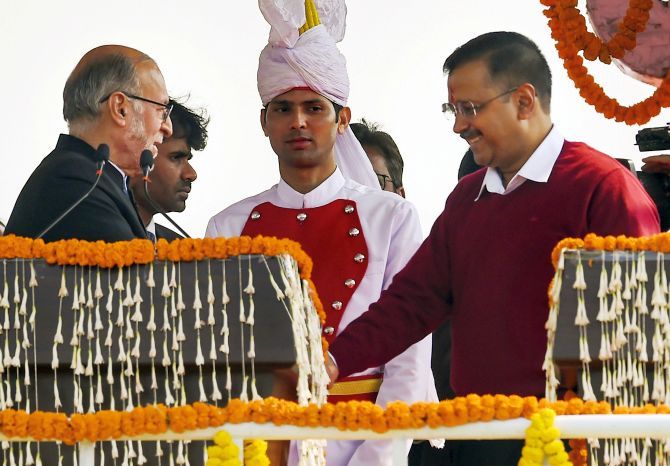
The Aam Aadmi Party won a landslide victory in the Assembly elections of Delhi last week.
A look at the finances of the city-state gives a hint of how the party managed things smartly.
The job of course was easier than that of other states as Delhi's fiscal position has been strong.
The size of Delhi's Budget is close to Rs 55,000 crore, or about 6 per cent of its gross state domestic product (GSDP).
What set the state apart is that in the last decade, its fiscal deficit hardly crossed 1 per cent of GSDP, while many other states grappled to contain it within 3 per cent.
This was largely possible due to the revenue surplus position.
However, the surplus has been shrinking of late (Chart 1).
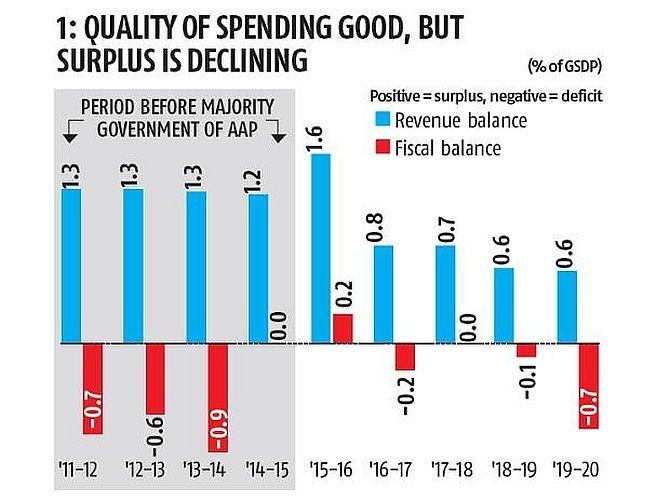
Goods and services tax gives the most revenue to Delhi (Chart 2).
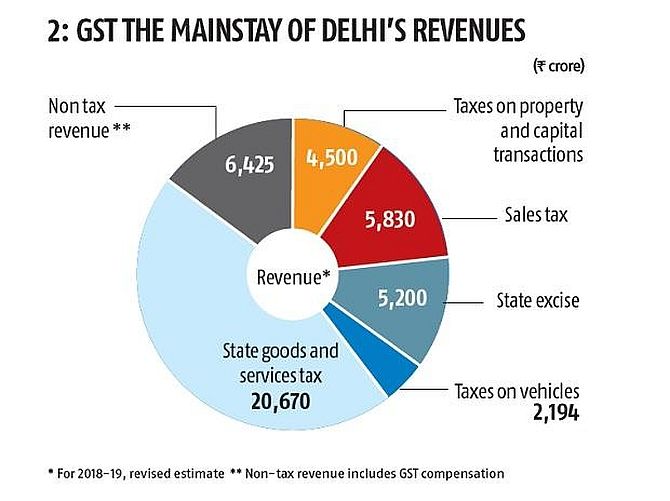
The data shows that capital spending has been nearly stagnant for many years, and though the Budget projects to ramp it up this year, it is highly unlikely that it would happen (Chart 3).
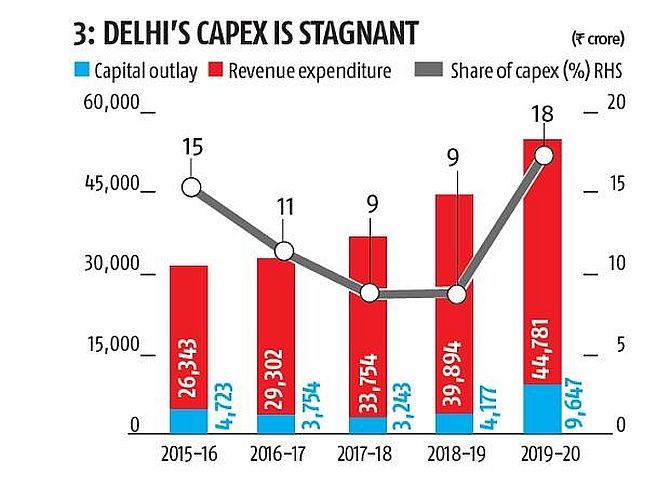
But to balance this, spending in key areas has more than doubled since AAP assumed power in 2015 (Chart 4A, 4B).

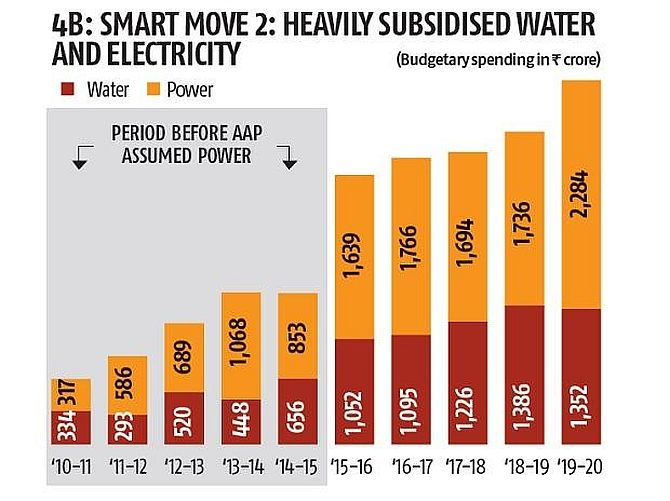
Experts attribute the landslide victory of AAP to its spending on health and education, water and power.
The boost in social spending after 2015 is noticeable.
Due to revenue sufficiency and little need to borrow for development spending, Delhi's debt to GSDP ratio is very low (Chart 5).
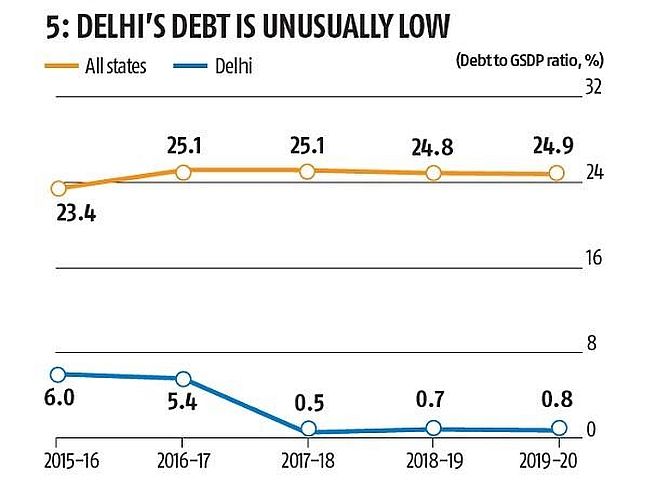
Compulsory spending on administration, salaries and interest payments is low in Delhi, when compared to the national average (Chart 6).
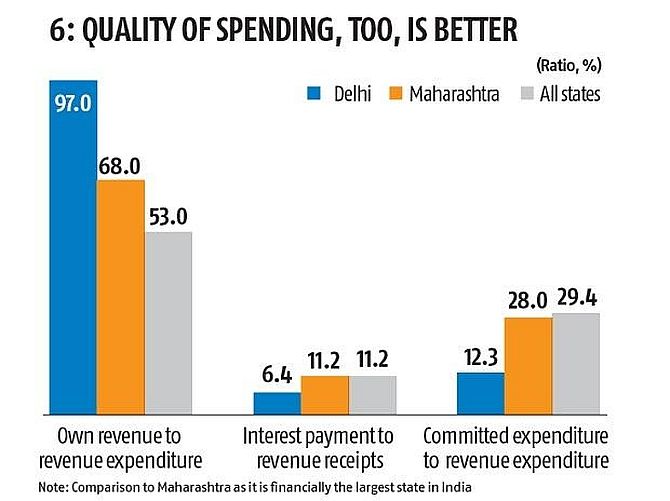
However, economic slowdown could spell trouble, as tax revenues are expected to rise slower than the economic growth, and could potentially derail the politically successful social spending model of Delhi (Chart 7).
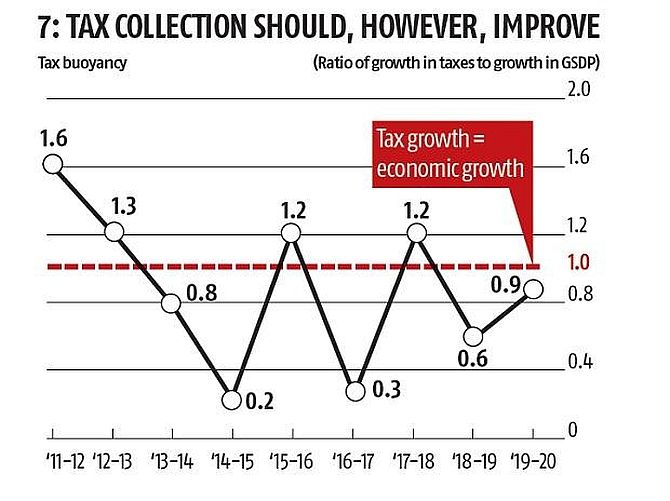




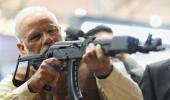
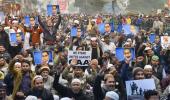






 © 2025
© 2025